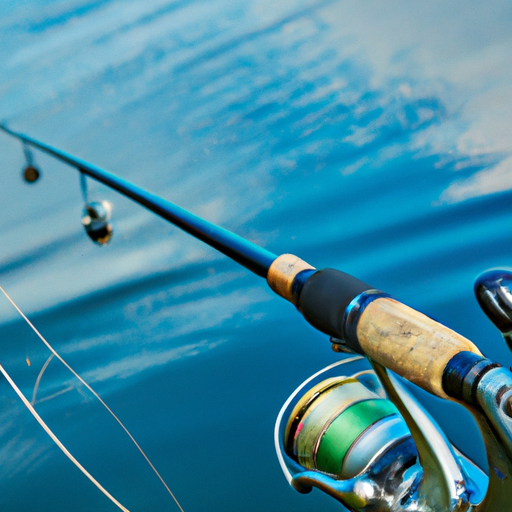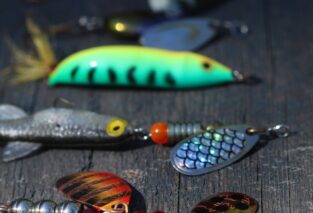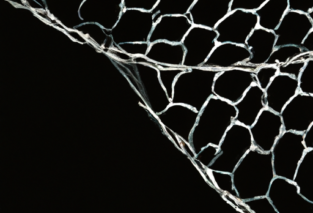If you’ve ever found yourself standing in the fishing aisle, staring at rows upon rows of fishing rods, feeling utterly confused about which one to choose, then this article is for you. “How To Choose The Right Fishing Rod Type: Spinning Baitcasting or Fly Fishing” is your ultimate guide to selecting the perfect fishing rod. Whether you’re a beginner or an experienced angler, this article breaks down the differences between spinning, baitcasting, and fly fishing rods, offering valuable insights to help you make an informed decision. Say goodbye to uncertainty and hello to the perfect fishing companion!

Spinning Rods
Overview
Spinning rods are a versatile and popular choice among anglers of all skill levels. They are designed to cast lightweight lures and are perfect for targeting various freshwater species such as bass, trout, and panfish. Spinning rods are known for their ease of use and are a great option for beginners who are just getting started in the world of fishing. They are also favored by experienced anglers for their accuracy and control.
Features
Spinning rods are characterized by their spinning reel, which is mounted underneath the rod. This design allows for better line control and reduces the risk of line tangling and backlash. These rods typically have a straight, flexible blank with guides that are designed to face downward, enabling smooth line flow and minimizing friction during casting. Spinning rods also feature a comfortable handle with a reel seat that provides a secure grip and enhances sensitivity, allowing anglers to feel even the slightest nibble.
Uses
Spinning rods are incredibly versatile and can be used in a variety of fishing techniques. Whether you prefer to fish from the shore, a boat, or a kayak, a spinning rod is a reliable option. It allows for accurate casts and precise lure presentation, making it ideal for techniques such as finesse fishing, drop-shotting, and jigging. Additionally, spinning rods excel in situations where you need to cast lightweight lures or fish in areas with dense vegetation. Their versatility makes them suitable for both freshwater and saltwater fishing.
Baitcasting Rods
Overview
Baitcasting rods, also known as casting rods, are designed for anglers who prefer a more specialized and powerful fishing experience. These rods are commonly used for targeting larger freshwater species like bass, pike, and muskie, as well as saltwater game fish such as redfish and tarpon. Baitcasting rods offer superior casting distance, accuracy, and control, making them a popular choice among experienced anglers.
Features
The key feature of a baitcasting rod is the baitcasting reel, which is mounted on top of the rod. This reel design allows for precise control over the line release during casting, resulting in longer and more accurate casts. Baitcasting rods typically have a stiffer and thicker blank, which provides the backbone needed to handle larger fish and heavier lures. The guides on a baitcasting rod are positioned on top of the rod, allowing for smooth line flow and reducing the chance of line entanglement.
Uses
Baitcasting rods are best suited for more demanding fishing techniques that require strength and accuracy. Whether you’re flipping heavy jigs into a dense cover, pitching soft plastic baits along a shoreline, or casting large swimbaits into deep water, a baitcasting rod will provide the power and control needed to handle these situations. These rods are also commonly used in offshore saltwater fishing for targeting species like tuna, kingfish, and dorado. However, baitcasting rods require some skill and practice to master, making them more suitable for intermediate to advanced anglers.

Fly Fishing Rods
Overview
Fly fishing rods are unique in their design and purpose. They are specifically designed to cast lightweight flies and imitate the behavior of insects, making them a popular choice for freshwater fly fishing. Fly fishing is an art form in itself and offers anglers a more immersive and intimate fishing experience. Whether you’re casting dry flies on a serene mountain stream or battling aggressive trout in a fast-flowing river, a fly fishing rod is your tool of choice.
Features
Fly fishing rods have a distinct design that sets them apart from other types of fishing rods. They are long and thin with a flexible blank, allowing for delicate presentations and accurate casts. Most fly fishing rods have a reel seat located near the butt of the rod, and the reel is specifically designed to hold a weight-forward fly line. The guides on a fly rod are oversized and are designed to minimize line friction and enable smooth line flow for effortless casting.
Uses
Fly fishing rods are primarily used for fly fishing, a technique that involves using a lightweight fly line and artificial flies to entice fish. This method is commonly used for targeting freshwater species like trout, salmon, and bass. Fly fishing requires a high level of skill and finesse, as the angler must present the fly in a natural manner to fool the fish. It is a form of fishing that emphasizes the interaction between the angler, the rod, and the fish, making it a popular choice among those seeking a more immersive fishing experience.
Fishing Technique
Casting Distance
When it comes to casting distance, baitcasting rods excel at long casts. The design of the baitcasting reel allows for precise control over the line release, resulting in longer and more accurate casts. This is especially beneficial when fishing in open water or when targeting species that are located far from the shore. Spinning rods are also capable of casting long distances, but they may not offer the same level of control and accuracy as baitcasting rods.
On the other hand, fly fishing rods are not typically known for their casting distance. Due to the lightweight nature of the flies and the casting technique involved, fly rods are often used for shorter casts. However, with the right technique and practice, fly anglers can still achieve significant casting distance when needed.
Casting Accuracy
When it comes to casting accuracy, both baitcasting rods and spinning rods offer good precision. Baitcasting rods have the advantage of their top-mounted reel, which allows for more control over the line release. This makes it easier to place a lure accurately in specific areas, such as under overhanging trees or near structure. Spinning rods, while not offering the same level of control as baitcasting rods, are still highly accurate and can be used effectively for targeting specific areas, especially when finesse fishing or casting lightweight lures.
Fly fishing rods, on the other hand, excel in casting accuracy. The casting technique used in fly fishing, known as the fly line loop, allows for precise placement of the fly. Anglers can cast the fly with great accuracy, placing it exactly where they want it to be, whether it’s in front of a rising trout or in a tight spot surrounded by vegetation.
Control
When it comes to control, all three types of rods offer different advantages. Spinning rods are known for their ease of use and forgiving nature. The spinning reel mounted underneath the rod provides better line control, reducing the risk of line tangling and backlash. This makes spinning rods a great choice for beginners who may not have the same level of skill or finesse as more experienced anglers.
Baitcasting rods offer a high level of control, especially when it comes to fishing in heavy cover or around structure. The top-mounted reel allows for precise control over the line release, making it easier to maneuver lures in tight spaces. Baitcasting rods also provide excellent sensitivity, allowing anglers to feel even the slightest nibble, which is crucial when targeting larger, more aggressive fish.
Fly fishing rods offer unparalleled control due to their lightweight, flexible design. The angler maintains direct control over the line, giving them the ability to manipulate the fly in various ways to imitate the natural movement of insects. This level of control is essential in fooling fish into biting, as the angler must mimic the behavior of the prey to entice the fish to strike.
Lure Presentation
Lure presentation is an essential aspect of fishing, as it determines how enticing the bait appears to the fish. Spinning rods are versatile in terms of lure presentation, allowing anglers to easily cast and retrieve a wide variety of lures, from small jigs to larger crankbaits. The spinning reel’s design provides smooth line flow and minimizes line twist, resulting in a more natural lure movement in the water.
Baitcasting rods excel in lure presentation, especially when it comes to techniques that require precise lure control and manipulation. The top-mounted reel allows for more accurate lure placement, making it easier to present the bait in a lifelike manner. This is particularly useful when fishing in heavy cover or when targeting specific areas where fish are likely to be hiding.
Fly fishing rods are specifically designed for lure presentation. The lightweight fly, combined with the casting technique used in fly fishing, allows for delicate presentations that imitate the behavior of insects. Anglers can use various casting styles, such as roll cast or reach cast, to present the fly in different ways, mimicking the natural movement of the prey and enticing the fish to bite.

Skill Level
Beginner
For beginners, spinning rods are the most user-friendly option. They are easy to use, forgiving, and provide a good balance of control and versatility. Spinning reels are relatively simple to operate, and the design of spinning rods allows for easier line management, reducing the risk of line tangling or backlash. Beginners can quickly grasp the basics of casting and retrieve techniques with a spinning rod, making it a great choice for those who are new to fishing.
Intermediate
Intermediate anglers can benefit from using both spinning rods and baitcasting rods. Spinning rods are a familiar and reliable option that provides good control and accuracy. As intermediate anglers gain more experience, they may want to challenge themselves by transitioning to baitcasting rods. Baitcasting rods offer superior control and sensitivity, allowing for more advanced techniques and presentations. However, mastering the use of a baitcasting rod requires practice and patience.
Advanced
Advanced anglers have the skills and experience to handle all types of fishing rods. They can choose the appropriate rod based on their target species, fishing technique, and personal preference. Advanced anglers may have a collection of spinning rods, baitcasting rods, and fly fishing rods to cater to different fishing scenarios. They have mastered the techniques involved in each type of fishing and can adapt to various situations with ease.
Target Species
Freshwater
All three types of rods can be used for freshwater fishing, but certain species can be better targeted with specific rods. Spinning rods are versatile and suitable for a wide range of freshwater species such as bass, trout, panfish, and walleye. Baitcasting rods are ideal for larger freshwater species such as bass, pike, muskie, and catfish. Fly fishing rods are commonly used for trout, salmon, and bass, as well as other freshwater species that feed on insects.
Saltwater
While spinning rods can be used for light saltwater fishing, baitcasting rods and fly fishing rods are more commonly used in this environment. Baitcasting rods offer the power and control needed to handle saltwater game fish such as redfish, snook, tarpon, and striped bass. Fly fishing rods are favored by saltwater anglers for targeting species like bonefish, permit, redfish, and snook. The lightweight design of fly rods allows for delicate presentations, making them ideal for fishing in clear, shallow saltwater flats.

Fishing Location
Lakes and Ponds
Lakes and ponds provide a variety of fishing opportunities, from targeting species like bass, trout, and panfish to going after larger predatory fish like pike and muskie. Spinning rods are a popular choice for fishing in lakes and ponds, as they offer versatility and ease of use. Anglers can cast a variety of lures, such as spinners, soft plastics, and crankbaits, from the shore or a boat using a spinning rod. Baitcasting rods can also be used in lakes and ponds, especially when targeting larger fish or fishing in heavy cover.
Rivers and Streams
Rivers and streams offer a unique fishing experience, with their fast-moving water and varied habitats. Spinning rods are suitable for fishing in rivers and streams, allowing anglers to cast lightweight lures and cover a wide area. These rods are ideal for finesse fishing techniques such as drop-shotting and jigging. Baitcasting rods can also be used in rivers and streams, especially when targeting larger fish or fishing in areas with heavy cover. Fly fishing rods are a popular choice for anglers who enjoy the challenge of casting dry flies or nymphs in moving water.
Coastal Waters
Coastal waters, including saltwater flats, beaches, and rocky shorelines, provide a different fishing experience compared to inland fishing. Spinning rods can be used for light saltwater fishing from shore, targeting species like snook, redfish, and spotted sea trout. Baitcasting rods are commonly used for targeting larger saltwater species such as tarpon, redfish, and striped bass, as well as inshore species like snook and black drum. Fly fishing rods are a popular choice for anglers targeting bonefish, permit, and other saltwater game fish in shallow water flats.
Rod Length
Short Rods
Short rods, usually ranging from 4 to 6 feet in length, offer better control and maneuverability in tight spaces. They are often used for fishing in small streams or when fishing in dense vegetation or brush-covered areas. Short rods are ideal for techniques that require precise lure placement, such as flipping or pitching.
Medium Rods
Medium-length rods, typically ranging from 6 to 8 feet, offer a good balance between control and casting distance. They are versatile rods that can be used in a variety of fishing situations, from fishing in lakes and ponds to targeting larger fish in rivers and coastal waters. Medium rods are popular among anglers who value versatility and want a rod that can handle a wide range of fishing techniques and species.
Long Rods
Long rods, ranging from 8 to 12 feet or more in length, are primarily used for specific fishing techniques or situations. They offer increased casting distance and control when fishing in open water or when targeting fish that are located far from the shore. Long rods are commonly used in surf fishing, where anglers need to cast heavy lures or baits long distances to reach fish that are beyond the breaking waves.

Power and Action
Power
Rod power refers to the amount of pressure needed to bend the rod. It determines the rod’s strength and ability to handle different lure weights and fish sizes. Spinning, baitcasting, and fly fishing rods are available in various power ratings, ranging from ultra-light to heavy.
Ultra-light and light power rods are designed for casting lightweight lures and targeting smaller fish species. They offer excellent sensitivity and are ideal for finesse techniques and fishing with light lines.
Medium power rods offer a good balance between sensitivity and strength. They can handle a wide range of lure weights and are suitable for targeting medium-sized fish like bass, trout, and walleye.
Medium-heavy to heavy power rods are designed for casting heavier lures and targeting larger fish species. They offer more backbone and are ideal for fishing in heavy cover or when targeting trophy-sized fish.
Action
Rod action refers to how much and where the rod bends when pressure is applied to the tip. It determines the rod’s sensitivity and the type of fishing techniques it is best suited for. Spinning, baitcasting, and fly fishing rods come in different action ratings, including slow, moderate, and fast.
Slow action rods bend throughout their entire length, from the tip to the butt, when pressure is applied. They offer the greatest level of flexibility and are ideal for casting lightweight lures and fishing in situations that require delicate presentations.
Moderate action rods bend primarily in the upper half of the rod when pressure is applied. They provide a good balance of flexibility and power and are suitable for a wide range of fishing techniques and lure weights.
Fast action rods bend primarily in the tip section when pressure is applied. They offer increased sensitivity and power, making them ideal for techniques that require quick and accurate hook sets and efficient lure control.
Budget Considerations
Affordable Options
For anglers on a budget, there are plenty of affordable options available. Spinning rods are often the most budget-friendly choice, with a wide range of models available at various price points. Entry-level spinning rods can provide excellent performance and durability without breaking the bank. Baitcasting and fly fishing rods may be slightly more expensive, but there are still affordable options available for those who want to try these fishing techniques.
Mid-range Options
Mid-range options offer a good balance between price and performance. These rods often feature upgraded components and materials, providing better sensitivity, durability, and overall fishing experience. They are a popular choice among anglers who want to invest in a quality rod without spending a fortune. Mid-range spinning, baitcasting, and fly fishing rods are suitable for anglers of all skill levels and can provide years of reliable use.
High-end Options
High-end rods are designed for serious anglers who demand the best performance and quality. These rods often feature premium components, advanced materials, and cutting-edge technology, resulting in superior sensitivity, accuracy, and control. High-end spinning, baitcasting, and fly fishing rods are typically more expensive, but they offer unmatched performance and are built to last. They are the top choice for professional anglers and those who are passionate about their fishing pursuits.





